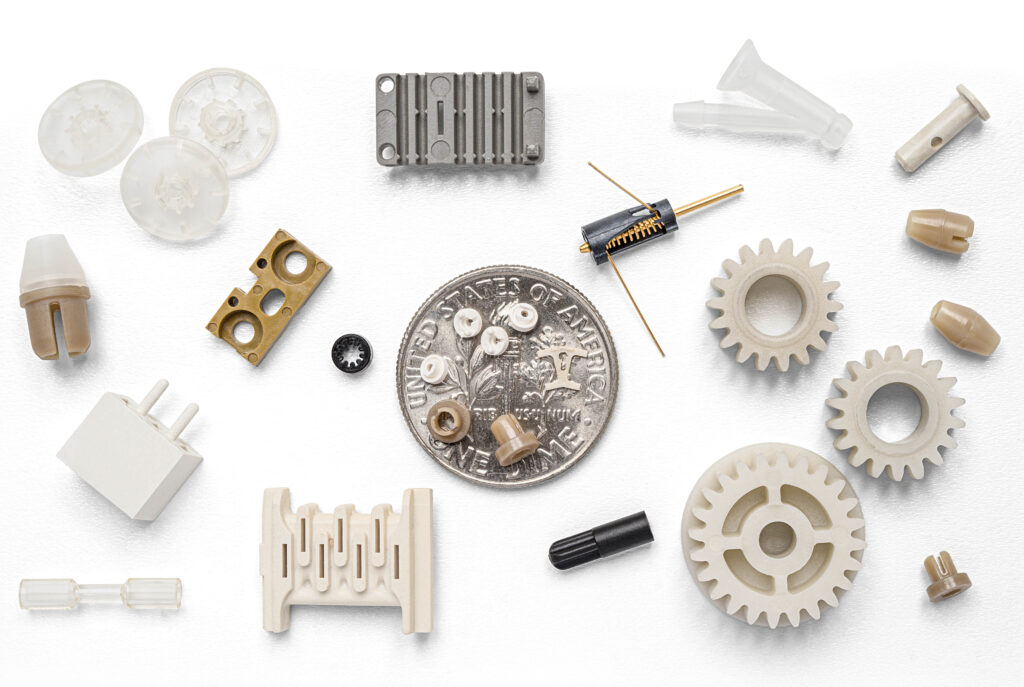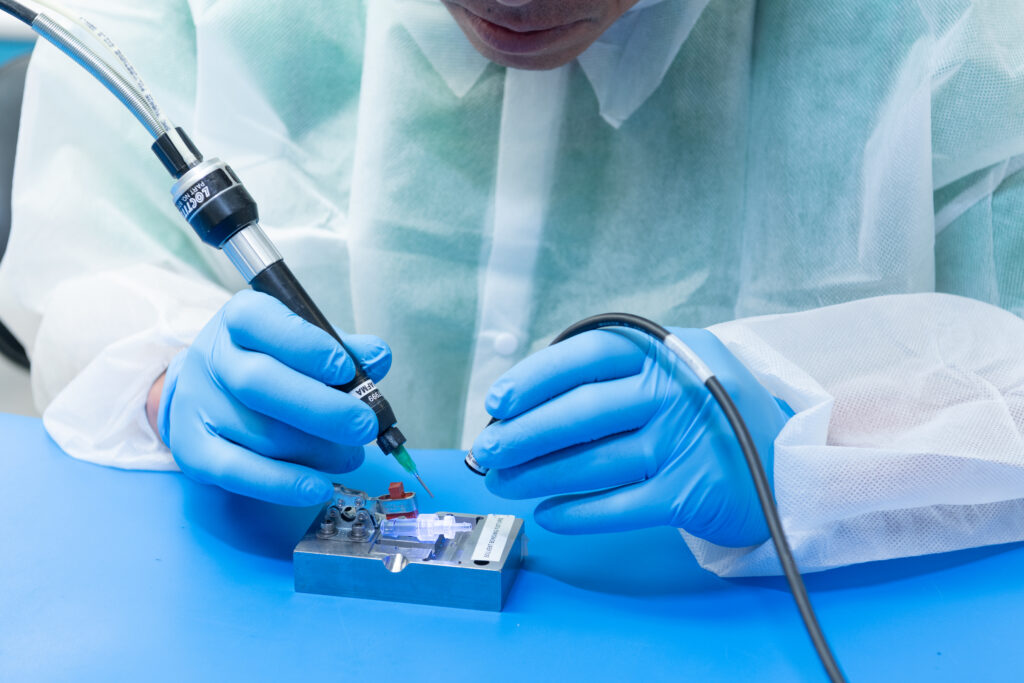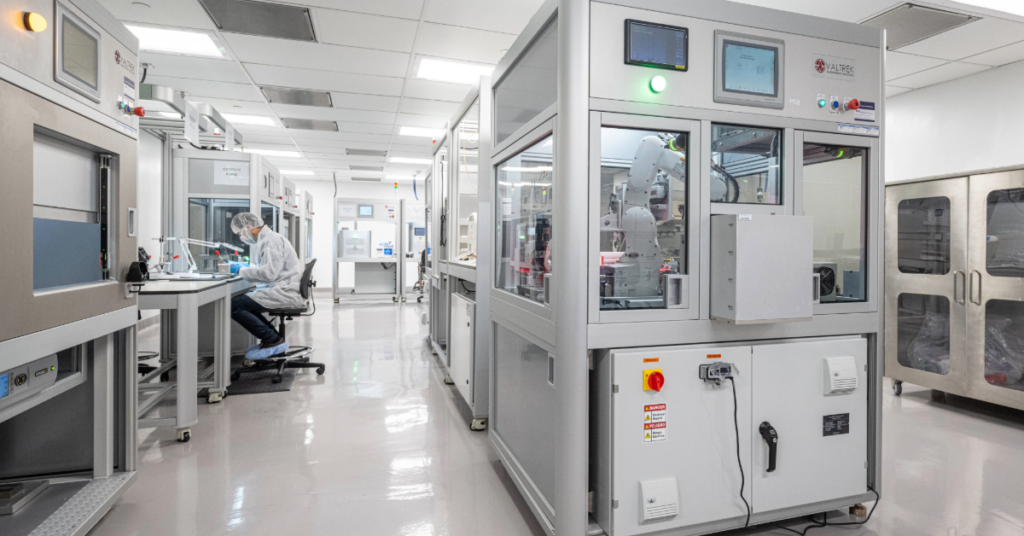By David Mulera, Corporate Vice President, Engineering, Viant
This article originally appeared in Medical Design and Outsourcing.
Overmolding silicone onto thermoplastics can be challenging, but offers advantages over TPEs that include chemical resistance, tensile strength and compression set. Here are some best practices to maximize your success.
The most common type of overmolding involves thermoplastic elastomers (TPEs) over thermoplastics. However, a growing number of medical molders are expanding the use of overmolding for liquid silicone rubber (LSR) because it offers a number of superior performance characteristics.
LSR acts as a protective cover against dust, water, impact, heat and electrical shock. For implantables, silicone creates a bio-friendly barrier between the medical device and the patient.
Typical applications for LSR overmolding include:
- wearable devices
- mechanical reinforcement
- gaskets
- seals
- fluidic components
- medical catheters
- medical implants
In many applications, overmolding LSR onto thermoplastics offers advantages compared with TPEs, including better:
- tensile strength
- chemical resistance
- compression set
- heat resistance
- extreme low-temperature flexibility
- elongation
- inherent lubricity
Achieving good long-term adhesion can be difficult when overmolding TPEs onto rigid thermoplastic substrates. However, the challenge can be even greater with LSR.
Here are some best practices to maximize your success:
- Select your materials properly
Many plastic substrates require glass transition temperatures lower than that of LSR to properly cure. When possible, select a substrate material with a glass transition temperature above 300°F to ensure proper curing. Also consider using newer “primerless” or “self-adhesive” grades of LSR. These are formulated to bond well to thermoplastics on their own. - Avoid resin additives and mold releases
Steer clear of substrate thermoplastics that have additives or mold releases that can create an adhesion problem. External mold releases are a definite no-no because they can also interfere with adhesion. Avoid additives with sulfur or amines (including amine-based antistats), as they can inhibit the cure of LSR. - Test your material combination
To understand how well your substrate material will bond to a particular grade of LSR, it’s a good idea to send a representative part or sample plaque to the LSR supplier for testing. Most suppliers will perform this testing at no or minimal charge and it’s a good insurance policy before you invest in molds. - Keep your thermoplastic substrates free of contamination
Any contamination can interfere with adhesion, so it’s important to keep substrates clean before overmolding. This is less of an issue if the substrates are molded with the LSR in a two-shot mold, rather than molded separately and transferred from one machine to another. This is why it’s better to use a two-shot overmolding technique over transfer overmolding when possible. - Consider pretreating the substrate (transfer molding only)
Preparing the substrate surface with chemical primers, plasma or a UV treatment can increase adhesion. This is typically not possible with a two-shot overmolding process but can be done on transfer overmolding if adhesion is a major concern. - Keep your substrates warm
It’s vital for substrate parts to be hot because the bonding of LSR to the thermoplastic is a chemical reaction; it needs a combination of time, temperature and pressure. Typical mold temperatures for LSR are 300°F to 400°F. The hotter the temperature, the shorter the cure cycle. Temperature is less of an issue if the substrates are molded in a two-shot mold, because the residual heat left in the substrate from the first shot helps cure the LSR. If the substrate is molded separately in a transfer overmolding process, it’s a good idea to preheat it in a conveyor oven or on a hot plate. - Design in a mechanical interlock when possible
Even if you follow the recommended practices for optimal LSR adhesion, it never hurts to incorporate into the part design some form of mechanical interlock between the materials. Allowing LSR to penetrate through-holes onto the back side of the part is a good example. A rough finish on the overmolding interface area can help, but isn’t required with a good self-bonding material. - Avoid aggressive demolding
Avoid pulling or stretching the LSR when demolding because it may not be fully adhered and cured. Consider a PTFE coating on the mold to help with demolding. - Maintain a consistent cycle time
With transfer molding using two machines, it definitely helps to use automated (robotic) transfer from one to the other. (This is not usually an issue with two-shot molding.) This will ensure that the substrate temperature is consistent for overmolding and also avoids any contamination from a human operator handling parts.
Overmolding LSR onto thermoplastics can be more challenging than overmolding TPEs, but the benefits in terms of device performance characteristics make this specialized process well worth it. Looking ahead, innovations such as UV-curable silicone will likely allow medical molders to further drive down cycle time and increase adoption of this overmolding technique.
This article originally appeared in Medical Design and Outsourcing.



